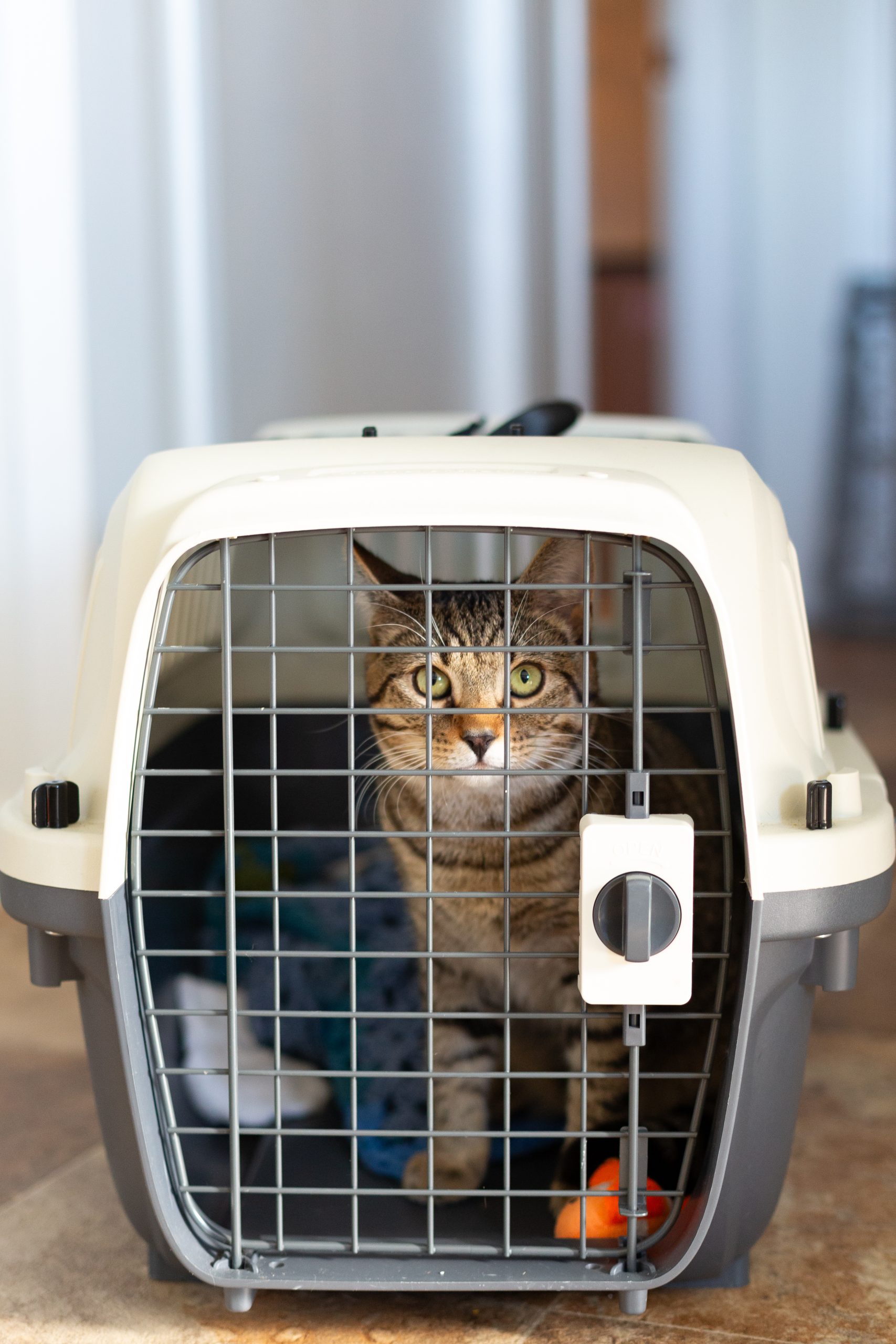Our objective at Park Hill Pet Clinic is to empower pet owners with the information necessary to ensure the well-being and happiness of their beloved companions. Here you will find information on common health conditions, their symptoms and treatments.
Resources
Pet Health Education
Beginning at around age 7, your pet enters his or her senior years. Often, pets begin to develop diseases common to their senior human counterparts, such as diabetes, renal disease, heart disease, endocrine disease and cancer. Early in these diseases symptoms may be subtle and go unnoticed.
Early detection can help in disease prevention and can minimize suffering. Early intervention with a program of diet and or medications can be started to help manage certain diseases or slow their progression, thus extending your pet’s life as well as his or her quality of life. Preventive diagnostics include establishing baseline bloodwork, physical exam and urinalysis.
Together, we can help your pet. You know your pet better than anyone else and can alert us to any changes in your pet before they become serious. We can help you understand the common medical conditions that your senior pet faces, and discuss a regular monitoring plan.
Heartworms are parasites that inhabit the hearts and lungs of infected dogs and cats. Heartworm disease can cause serious health problems, and may eventually lead to heart failure and death.
Heartworm infection is transmitted by mosquitoes. In warmer areas of the country, mainly the south, the risk of heartworm infection is year round. The prevalence of this deadly disease has increased steadily since it was first identified, and it now affects pets in all 50 states.
Signs of heartworm disease in dogs includes coughing, difficulty breathing, sluggishness and reduced ability to exercise. While these symptoms may be the sign of something else, your veterinarian can perform an in-house blood test to determine if your dog has heartworms.
While treatable in dogs, heartworm disease treatment is expensive and not without risk to the pet. Prevention is the safe, effective way to combat the disease. There are also monthly pills and topical liquids that prevent heartworms. To the delight of many dog owners, there is now even an injectable heartworm prevention where one dose lasts for six months or even a year (SEE FEATURED PRODUCTS). All of these products of course cost money, but are a bargain compared to expense and health risks of treating heartworm disease.
Heartworm disease in cats has now been identified in over 30 states. Feline heartworm disease presents a different set of considerations. There is no treatment for heartworms in cats so prevention is extremely important for felines. The most popular product for heartworm prevention in cats is a topical liquid that is applied to their skin (SEE FEATURED PRODUCTS). The thought of having to force a pill down their cat’s throat every month kept many pet owners away from protecting their cat.
Don’t gamble with you pet’s health. Contact your veterinarian to have your pet tested today and start them on prevention and a long and healthy life.
Feline Panleukopenia:
Also known as feline distemper, this highly contagious, widespread disease can appear suddenly, causing fever, appetite loss, weight loss, depression, severe vomiting and diarrhea, dehydration and death. Immunize at eight to 10 weeks of age with a second dose two weeks later and a third dose at 16 weeks of age. Follow with an annual booster.
Feline Viral Rhinotracheitis:
Caused by a herpesvirus, this respiratory disease affects the upper air passages and lungs. It produces fever, sneezing, coughing, appetite loss, eye and nose irritation and discharge. Very young kittens sometimes die from secondary bacterial infection. It is common for cats that survive a case of viral rhinotracheitis to become chronic carriers, spreading infection to other cats they contact. Depending on the type of vaccine your veterinarian uses, kittens should be immunized no later than nine weeks of age, with follow-up injections and an annual booster.
Feline Calicivirus:
Cats often contract this upper respiratory infection simultaneously with FVR (above) . The signs are similar, although feline calicivirus mainly affects the lungs and oral cavity, causing viral pneumonia and ulcers to appear on the tongue. Cats may remain carriers for several years. Your veterinarian is likely to administer a combination vaccine against FVR and FCV.
Pneumonitis:
Primarily characterized by eye inflammation, this upper respiratory infection is caused by Chlamydia psittaci and can be complicated by secondary infection. Kittens are immunized at weaning time and yearly thereafter.
Feline Infectious Peritonitis:
Caused by a coronavirus, this disease often does not develop for months or even years after infection. FIP typically affects cats between the ages of six months and five years with signs that include fever, appetite loss, weight loss and depression. One form causes inflammation of blood vessels and fluid accumulation in the chest and abdomen. A second form causes lesions in lymph nodes, kidneys, eyes, the central nervous system and other organs. Both forms are fatal.
Feline Leukemia:
The Feline Leukemia Virus (FeLV) is responsible for a number of fatal conditions not strictly classified as leukemia. Among them are various forms of cancer and malignancy: the virus suppresses the immune system and leaves cats susceptible to other infectious diseases. Cats transmit FeLV to one another through saliva, so cats allowed to roam free are at greatest risk. There are several vaccines your veterinarian can choose from after testing to be sure your cat is negative for FeLV.
Rabies:
Transmitted through saliva from biting, all warm-blooded animals are susceptible to this viral infection. Severe damage to the central nervous system typically progresses to paralysis and death. Begin immunization at three months of age, repeat in one year and then according to local ordinances.
***These and other vaccinations may be recommended by your veterinarian depending on your cat’s specific needs.***
Don’t gamble with you pet’s health. Contact your veterinarian to have your pet tested today and start them on prevention and a long and healthy life.
Distemper:
Closely related to the measles virus, canine distemper virus spreads from dog to dog through respiratory secretions and aerosol exposure. The signs include fever, nasal and eye discharge, coughing, vomiting, diarrhea, or seizures and other neurologic signs. Secondary bacterial infections are common and may be fatal. Immunize at two, three and four months of age and annually thereafter.
Infectious Canine Hepatitis:
Infection with canine adenovirus-1 may result in inflammation of the liver, severe kidney damage and death. Immunize at two, three and four months of age with an annual booster.
Canine Parvoviral Enteritis (Parvo Virus):
Characterized by fever, dehydration, inactivity, abdominal pain, vomiting and diarrhea that is often bloody, parvovirus infection can cause rapid deterioration and death, particularly in puppies. Immunize at two, three and four months of age with an optional dose at five months. Follow with an annual booster.
Canine Coronaviral Enteritis:
With signs similar to but usually less severe than those of canine parvoviral enteritis (above), canine coronavirus infection may also cause rapid or sudden death in puppies. Immunizations should begin at six weeks of age, and continue every two to three weeks with the final dose at 12 weeks of age. An annual booster is recommended.
Infectious Tracheobronchitis (Kennel Cough):
The most common bacterium isolated from dogs with kennel cough is Bordetella bronchiseptica. In addition to contributing to this highly contagious upper respiratory disease, canine bordetella may result in bacterial pneumonia. Puppies should be immunized after they are at least two-weeks-old, with a booster given annually or one week before boarding to lessen the risk of exposure. Two common viral agents involved in kennel cough are the parainfluenza virus and canine adenovirus-2. Immunize at two, three and four months of age and follow with an annual booster.
Leptospirosis:
This bacterial infection results from direct contact with infected urine, biting or ingestion of infected meat, and it can be transmitted from pets to man. The kidneys and the liver may sustain permanent damage. Immunizations should begin at six weeks of age, and continue every two to three weeks with the final dose at 16 weeks of age. An annual booster is recommended.
Rabies:
Transmitted through saliva from biting, all warm-blooded animals are susceptible to this viral infection. Severe damage to the central nervous system typically progresses to paralysis and death. Begin immunization at three months of age, repeat in one year and then according to local ordinances.
Canine Lyme Disease:
Characterized by lameness, heart or kidney disease and nerve disorders, Lyme disease is caused by the tick-borne bacterium Borrelia Burgdorferi. If you live in an area where the disease occurs, immunize every two to three weeks until puppies are 12 weeks old. Annual boosters are recommended.
***These and other vaccinations may be recommended by your veterinarian depending on your dog’s specific needs.***
Don’t gamble with you pet’s health. Contact your veterinarian to have your pet tested today and start them on prevention and a long and healthy life.

FAQ
We are here to help! Reach out to our clinic with your questions or concerns. Here, we’ve assembled a collection of frequently asked questions from our valued clients.

A. Male cats will mark their territory by spraying. This is a hormone driven behavior. Having the cat neutered will generally stop this behavior because the cat no longer will produce hormones. However, if this behavior is allowed to go on for an extended period of time it can become a habit and neutering will not prevent it.
A. It depends on the area of the country that you live in. Mosquitos spread heartworm disease. The southern region of the country is a very high-risk area for heartworms. With the frequent warming spells that can occur in the winter, you should keep your dog on heartworm prevention all year long. Heartworm disease is inexpensive to prevent, but very expensive to treat and the treatment itself is not without risk.
A. Yes and no. Each vaccination booster only provides protection for a limited period of time. The immunity wears off. It is extremely important to complete the puppy series. He should have a follow up booster at 9 weeks and at 12 weeks. At 12 weeks the puppy will also get his rabies vaccine and then he will be protected for approximately 1 year. Annual boosters are required thereafter.
A. From the time a dog becomes infected with heartworms, it takes 6 months before the disease would show up on an antigen test. So if your puppy is younger than 6 months a test would not show a positive result even if your puppy has heartworms. Starting a puppy younger than 6 months old on heartworm preventative would kill any larval stages if present, before they reach the heart.
A. The general accepted age is 6 months. It would be rare for your cat to go into heat before 6 months of age. However, if necessary a kitten or a puppy can actually be spayed or neutered as early as 10 weeks with no problem though, this is not actively promoted by most veterinarians.
A. Canine Parvovirus is a very serious, highly contagious intestinal virus that generally attacks puppies and younger dogs though it is easily preventable with proper vaccinations. It is transmitted through the nose, mouth, stool, and people’s clothing that have come in contact with a sick animal and can be picked up in the ground. Lethargy, vomiting, and diarrhea, often with blood, are common symptoms. Parvo is generally fatal without treatment. There is no cure for Parvo. However, it can often be successfully treated with intravenous fluids and antibiotics. Hospitalization is required.
A. Your dog has tapeworms. Tapeworms are a parasite that lives in your dog’s intestines. Fleas that are ingested by your dog spread these worms. Though a common worm, over time will rob your pet of important nutrition so its important to have your dog treated. Treatment is simple with either an injection or tablet form. Flea control is important to prevent your pet from reinfestation.
A. It is not normal for a dog to continually have bad breath. This is generally a sign of gingivitis or infection of the gums. Just like humans, plaque can build up and cause odor, redness and infection. Left untreated it can lead to severe periodontal disease, tooth or bone loss, even infection of the sinus cavity, heart and brain in extreme cases. Your veterinarian can provide a dental cleaning and possibly prescribe antibiotics for your dog.
A. There are two types of mange in dogs, demodectic or Sarcoptic. Demodectic is not transmitted to humans though Sacroptic can be. Both types of mage exhibit patchy hair loss and redness. Both types can be treated with dips, injections, or oral medication.
A. The gestation period for a female dog or cat is about 62 to 63 days.
A. A dog or cat’s temperature can vary but is usually about 101.5 – 102.5 degrees Fahrenheit.
A. Kittens and puppies have “baby teeth” just like people. It is normal for them to lose these first teeth at about 3 � to 4 months to make room for their adult teeth.
A. This is almost always a sign of an allergy.
A. Feline leukemia or FeLV is actually a misleading name for an entire group of diseases, which may include leukemia (a blood cancer) or tumors. But more often, related diseases develop before the cancer does. FeLV is highly contagious and is passed from cat to cat by licking, biting, and sneezing. FeLV is a very serious disease that is generally, but not always fatal. It is generally preventable with proper vaccinations. It is the number one killer in cats and outdoor cats are at substantially higher risk.
A. Yearly vaccinations are recommended to maintain a proper level of protective immunity in your pet.
A.Distemper is a highly contagious viral disease among dogs. It is almost always fatal. Although it is more common in puppies than adult dogs, all dogs are susceptible. It is strongly recommended to vaccinate your dog yearly since distemper is such an extremely dangerous disease.
A. This can vary from clinic to clinic. But generally 3-4 days old is ideal. If they get much older than this anesthesia is required which can significantly increase the cost.
A. Regardless of what the bottle may say, dips generally don’t have much of a residual effect. They are very effective at killing the fleas that are on you pet now, but not much else. There are new, fantastic products available now for flea and tick control that are long lasting, easy to use and very effective.
A. You can, though it is not recommended. First, rabies not given by a veterinarian is not legally recognized by any agency in the state of Arkansas. But secondly, if the expense of taking your pet to a veterinarian just once a year is too costly for you, perhaps you should reconsider having a pet at all, if you can’t afford to care for it properly.
A. This is a common problem that is generally caused by either intestinal parasites such as tapeworms or his anal glands are impacted and need to be expressed or drained. Or he just has an itch.
A. Absolutely! This should be treated as an emergency situation. He will probably need to catheterized to allow him to urinate. Left untreated, the build up of waste products due to blocked urinary tract, with the associated electrolyte imbalance, can quickly kill your cat. A special diet then possibly can prevent this condition.
A. Approximately 1 in 3 dogs are overweight or obese. This can be a dangerous situation for your dog. Even a couple of pounds over is quite a bit for a dog or cat. First, no table scraps at all. But you can’t restrict your dog’s intake either because it will always be hungry or whine for food. There are now prescription diets available from your veterinarian that are very high in fiber and low in fat that are extremely effective for weight loss. Exercise is also an important pert in weight loss program. Excess pounds can take a real toll on their heart, circulation, joints, respiratory system and just their general quality of life. In this respect, your pet’s health is totally in you hands. Commitment on your part is very important for successful weight loss.
A. It is basically the same procedure for a dog or cat. It is a ovariohysterectomy in which the ovaries and uterus are removed. The procedure is equivalent to a complete hysterectomy for a woman. It is considered major surgery.
A. There is always an element of risk involved in any surgical procedure. It is strongly recommended that your pet have a pre-anesthesia blood screen before surgery. This will check liver and kidney function, white blood cell count and can also reveal other types of existing infection of conditions that should be treated first, before surgery. This pre-surgical blood work greatly reduces the risk of surgical complications.
A. No. By not letting your pet even go into heat before she is spayed greatly reduces the chance that she will develop mammary tumors later in life.
A. For a planned breeding, it is recommended that you wait until the second or third heat cycle.
